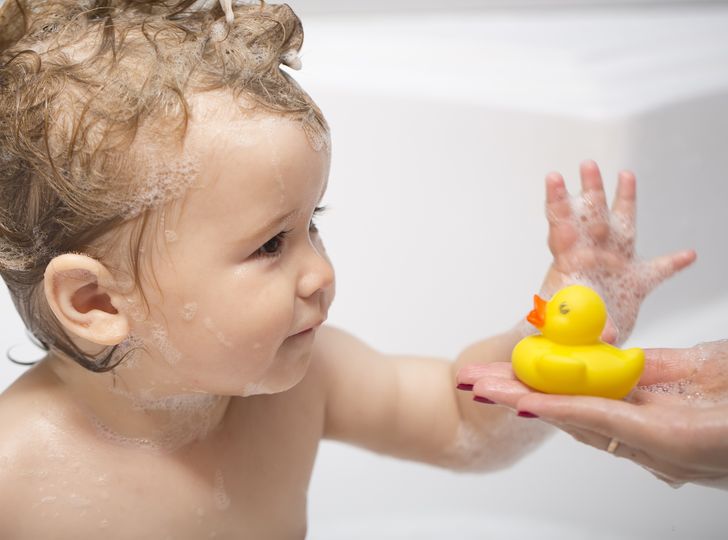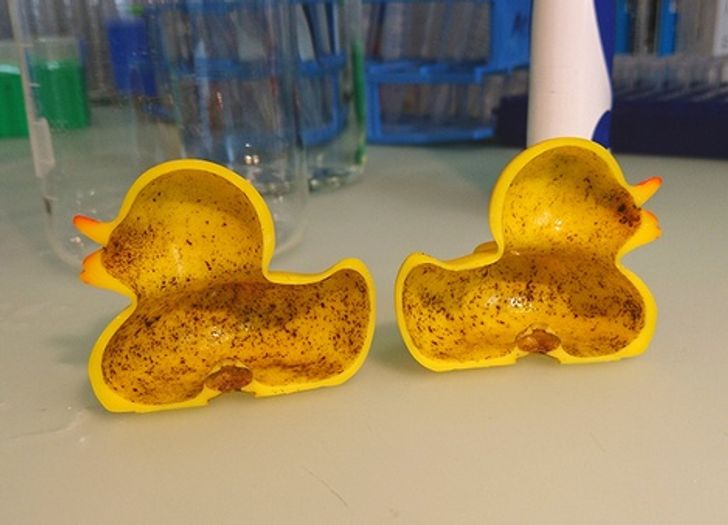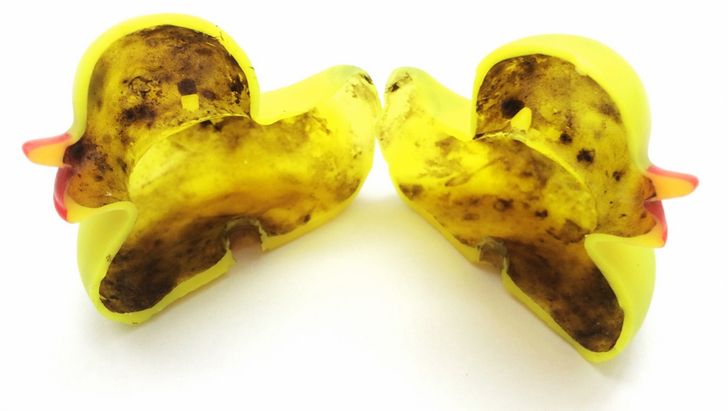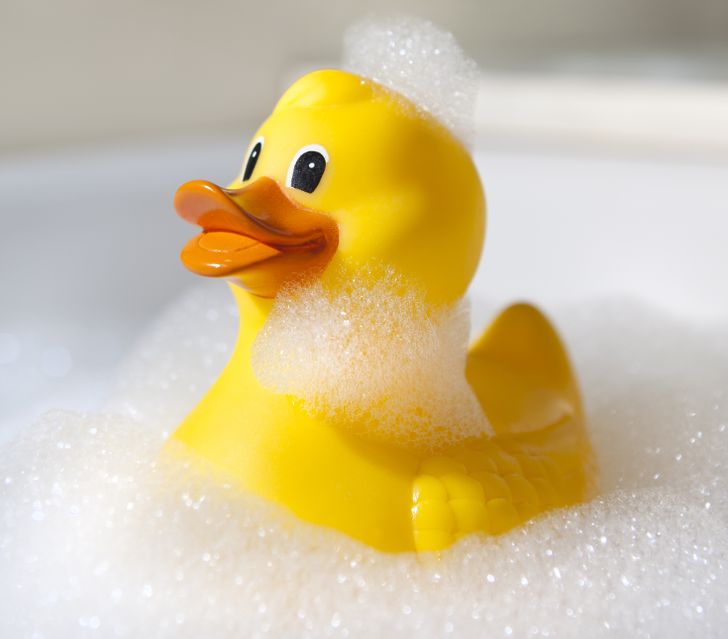kids need germs early in life, to help build up their natural immune system
Why an Innocent Rubber Duck Can Be Dangerous for Your Child
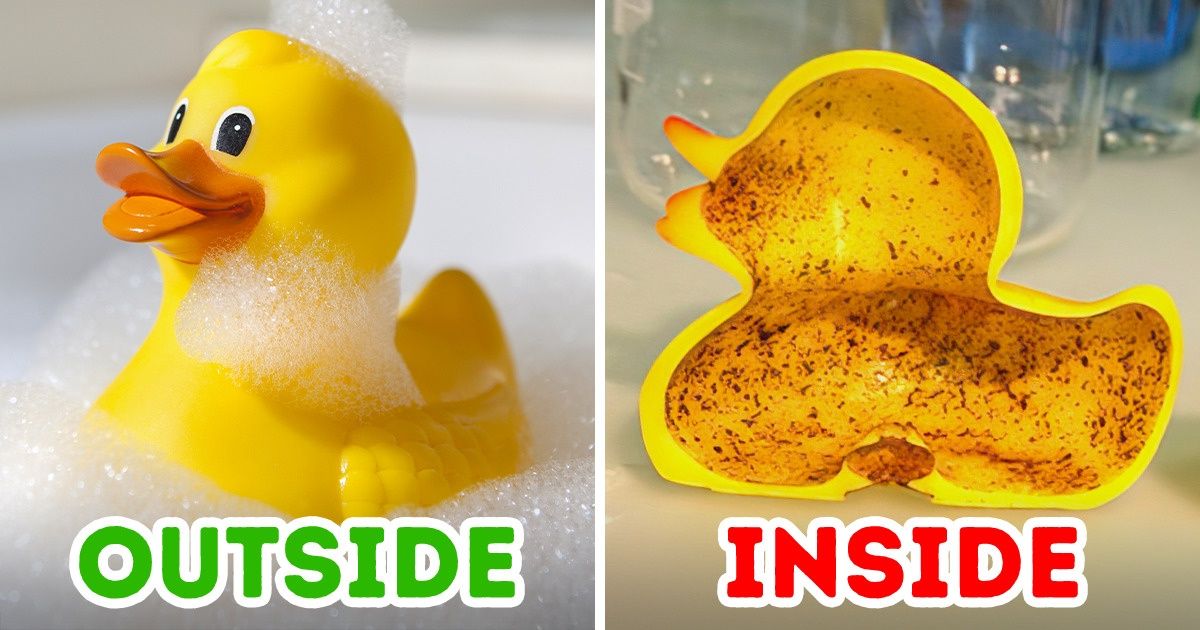
Cute yellow rubber ducks are probably one of the most popular bath toys for children. It’s hard to believe that sometimes these toys, that are quite innocent on the outside, can be ugly ducklings that can pose a real threat to our children. It’s all about the dark side of rubber ducks that we don’t actually see.
Here at Bright Side, we looked inside a rubber duck together with scientists to find out what these bath toys are hiding.
If you cut a rubber duck that’s been used for a while in half, you may be shocked.
One of the best things about playing with a rubber duck in a bath is the squirting effect that entertains kids. But what really happens when water gets inside a rubber toy?
It turns out, that a warm and humid bathroom creates the perfect conditions for bacteria and fungi to grow, and bath toys are no exception. With time, the inner surface of the toy gets contaminated and then all these bacteria and fungi get out of the toy when the child squeezes it.
A group of scientists from Eawag (Swiss Federal Institute of Aquatic Science and Technology), ETH Zurich (a public research university in the city of Zürich), and the University of Illinois have studied this problem. They did experiments with used bath toys and new bath toys after simulating their 11-week-old use in household conditions. Then the researchers cut the toys to have a closer look at their inner surface.
A used rubber duck can have between 5 million and 75 million cells of fungi and bacteria per 0.155 square inch of its inner surface.
Depending on the experiment conditions, the inner surface of the cut rubber ducks contained from 5 million to 75 million cells of fungi and bacteria per 0.155 square inch (1 square centimeter). Potentially pathogenic bacteria that were found during the research included Legionella.
So what is the reason that fungi and bacteria grow inside bath toys? According to researchers, the plastic materials that these toys are made of are to blame. Quite often these materials are made of poor quality, and they can “release substantial amounts of organic carbon compounds.”
It gets even worse when other bathing factors are added. Let’s imagine what really happens when a baby is playing with a rubber duck in a bath. The materials of the toy allow bacteria and fungi to grow, the water itself gets contaminated with bacteria from the human body, external dirt, and traces of personal care products. Kids, whose health is still vulnerable, squirt the water from the inside of the toy and come into contact with that dirty water. This is true not only for ducks, of course, but for other bath toys of the same type, made of similar materials.
With Eawag’s permission, we’re posting the pictures of cut used rubber ducks above and below to show you, how these popular toys can look inside after being used.
Speaking about the potential health hazard of rubber ducks, Frederik Hammes from Eawag notes: “This could strengthen the immune system, which would be positive, but it can also result in eye, ear, or even gastrointestinal infections.”
One of the solutions could be just closing the hole when you buy the duck, so that the water never gets inside. But Frederik Hammes is sure that we need to solve the problem of bath toys that are made of threatening materials in the first place and enforce stricter regulations for them.
You can see the Eawag video that shows the inside of used rubber ducks here.
Did you know that some bath toys can put kids’ health at risk? Do your kids play with rubber toys while bathing?
Comments
im never letting my baby brother play with rubber ducks again
this reminds me with horror all the times i sucked on these things when i was younger.
the inside looks wierd
what
Related Reads
12 True Stories So Twisted, They’d Make Hitchcock Flinch

12 Stepparents Who Cracked the Code to Their Stepchildren’s Hearts

15+ Heartfelt Times When Women Proved There’s a Rainbow After Every Storm

15 Stories That Remind Us to Stay Kind, Even When the World Isn’t

I Refuse to Let My Sick MIL Live With Us—I’m Not Her Free Caregiver

I Refuse to Let My Sister Step Inside the Home I Bought for Our Parents — and I’m Not Sorry
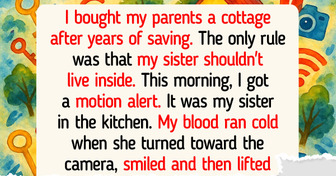
10 Stories That Remind Us to Stay Kind, Even When Life Tries to Break Us

20+ Moments That Remind Us That Kindness Costs Nothing but Means Everything

15 Stories That Prove a Small Spark of Kindness Can Light Up a Fading Soul

12 Stories That Show Kindness Doesn’t Need to Be Loud to Be Life-Changing

12 Quiet Acts of Kindness That Show Humanity Still Has a Heartbeat

10 People Who Saw Their Coworkers’ True Colors Before It Was Too Late

